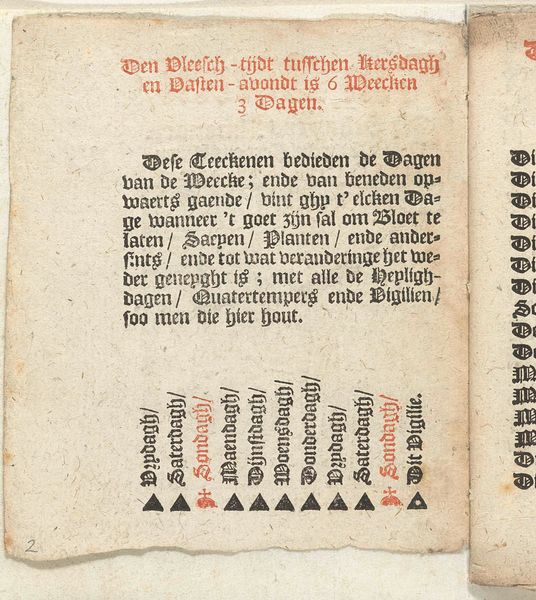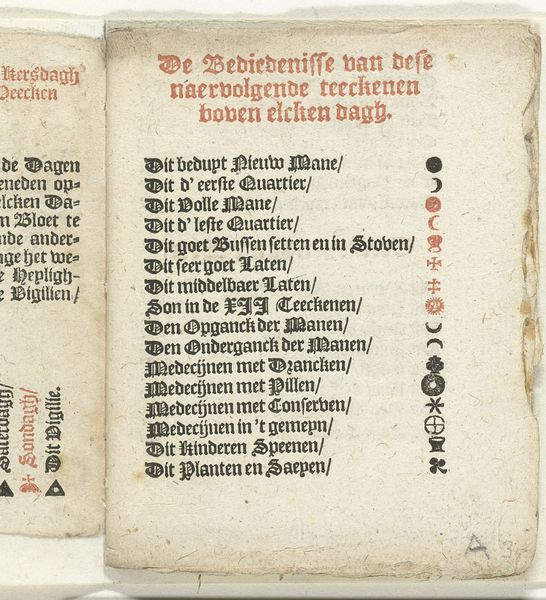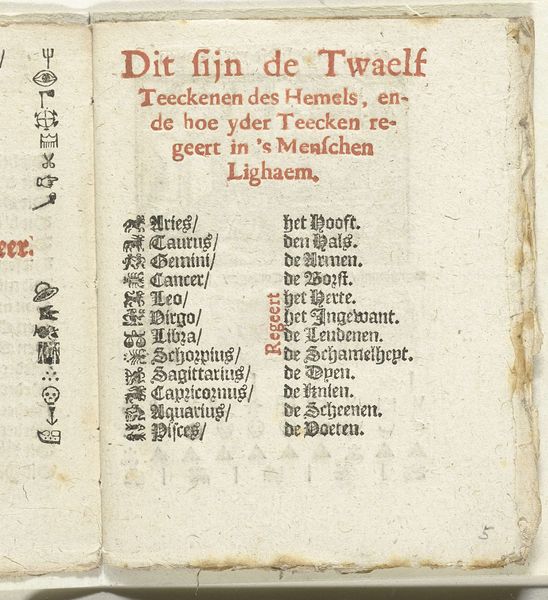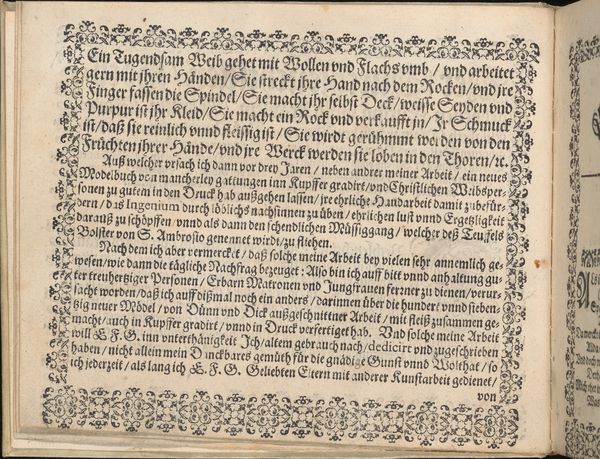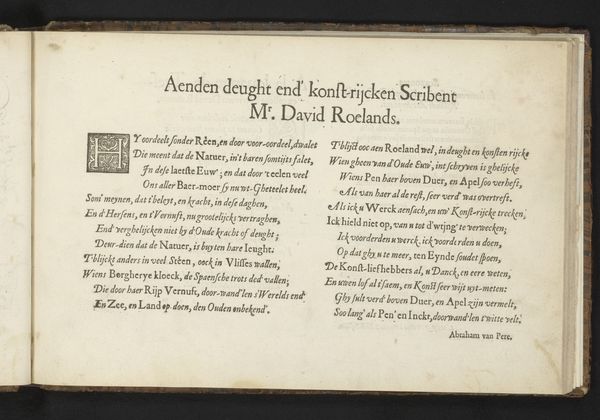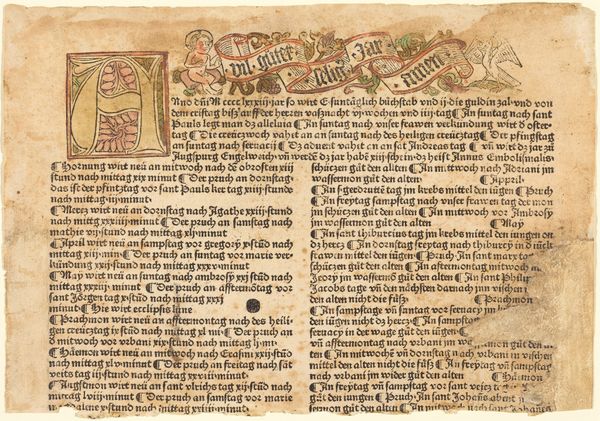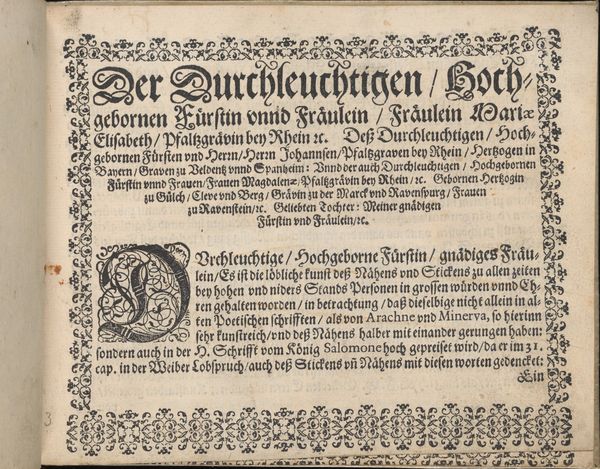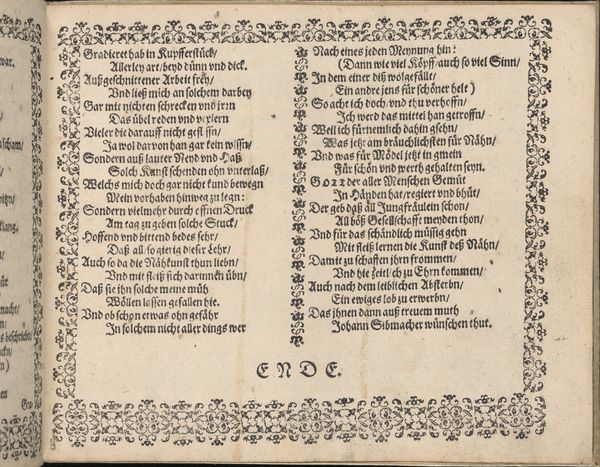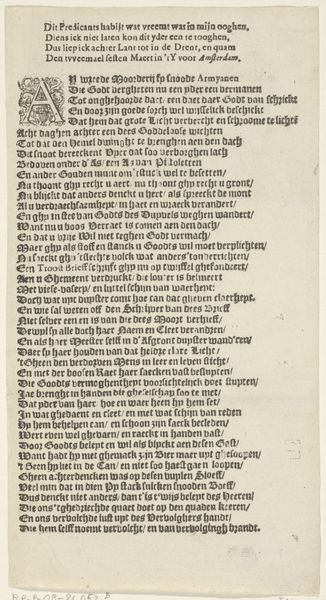
Bladzijde met verklaring van gebruikte symbolen en tekens voor het weer, 1712 1712
0:00
0:00
graphic-art, print, paper, typography
#
graphic-art
#
medieval
# print
#
paper
#
typography
#
historical font
Dimensions: height 105 mm, width 80 mm
Copyright: Rijks Museum: Open Domain
Curator: This page, "Bladzijde met verklaring van gebruikte symbolen en tekens voor het weer, 1712" by weduwe Slegers, showcases an intriguing mix of typography and symbols on paper. It gives you a real sense of everyday life from centuries ago, doesn’t it? I find its functionality almost beautiful, and very much linked to labor. Editor: It's fascinating how this almost reads like a manual, offering practical knowledge, perhaps even directed toward someone working the land? I am curious, what is particularly compelling about this work from your perspective? Curator: Precisely! Notice how the materiality of the print—the paper, the ink, the very act of its production—highlights a desire to democratize knowledge about the world and its impact on labor, for people not steeped in scholarly tradition. Editor: I see what you mean. It's less about artistry and more about accessibility. Were these weather guides commonly produced at this time? Curator: Certainly. Consider the rise of printing technology and the corresponding need for instructional materials among emerging classes. The relatively low cost of prints allowed for widespread consumption, which can explain the use of common language to teach something practical to an emergent, growing readership of farmers. Do you observe anything in this page which echoes this democratization of information? Editor: I suppose the symbols! Using symbols instead of complex prose would overcome literacy barriers. Also, how the text has a functional value… a clear alignment between purpose and execution. So, considering all that, the work invites viewers to think of print less as fine art and more as something… utilitarian? Curator: Indeed. These types of prints dissolve those very categories! It’s an early form of information design, deeply intertwined with the rhythms of daily life and the materials readily available to people. I also appreciate how the paper itself betrays its history of material circulation! Editor: Absolutely, it is more complex than it seems. Thank you, I see so much more now.
Comments
No comments
Be the first to comment and join the conversation on the ultimate creative platform.
